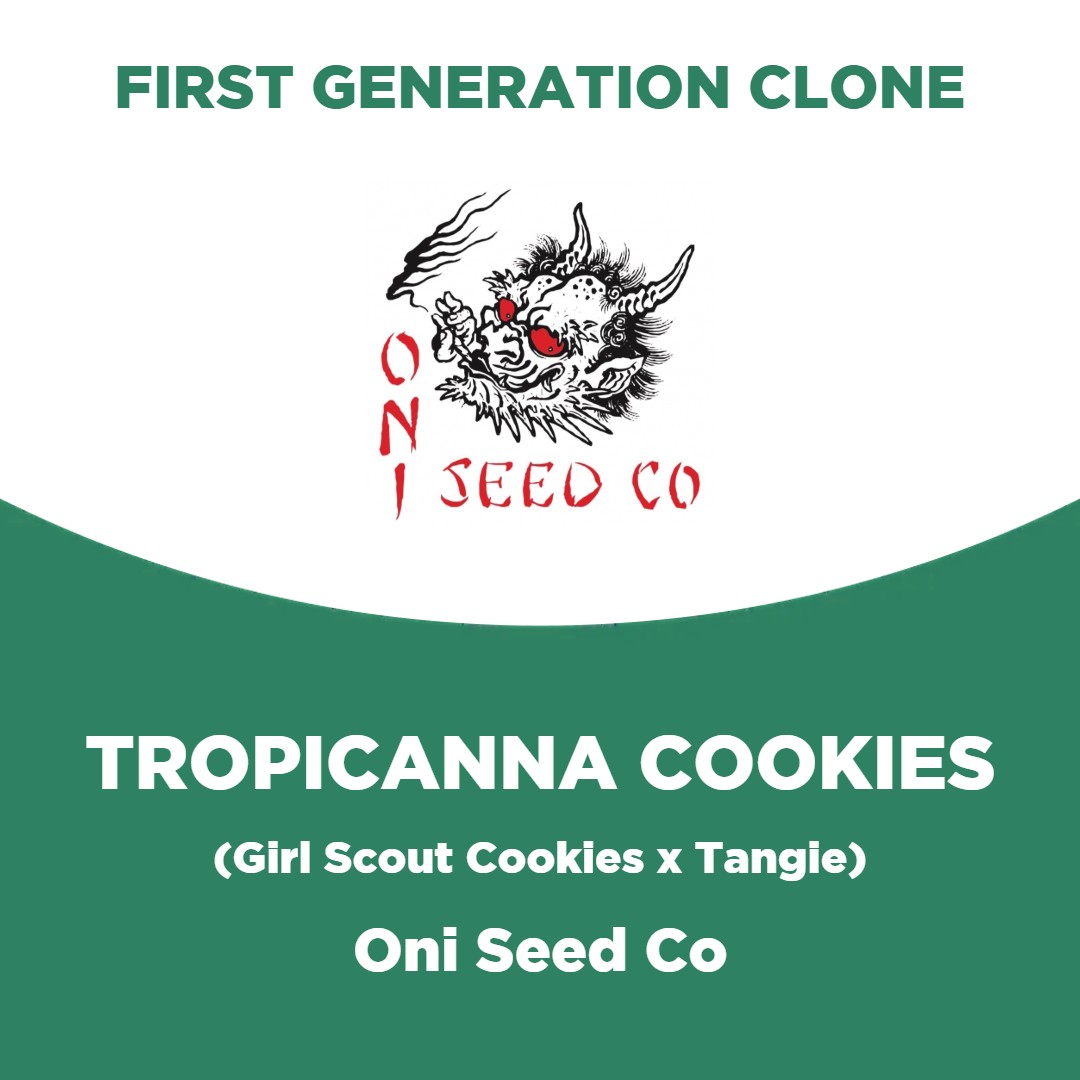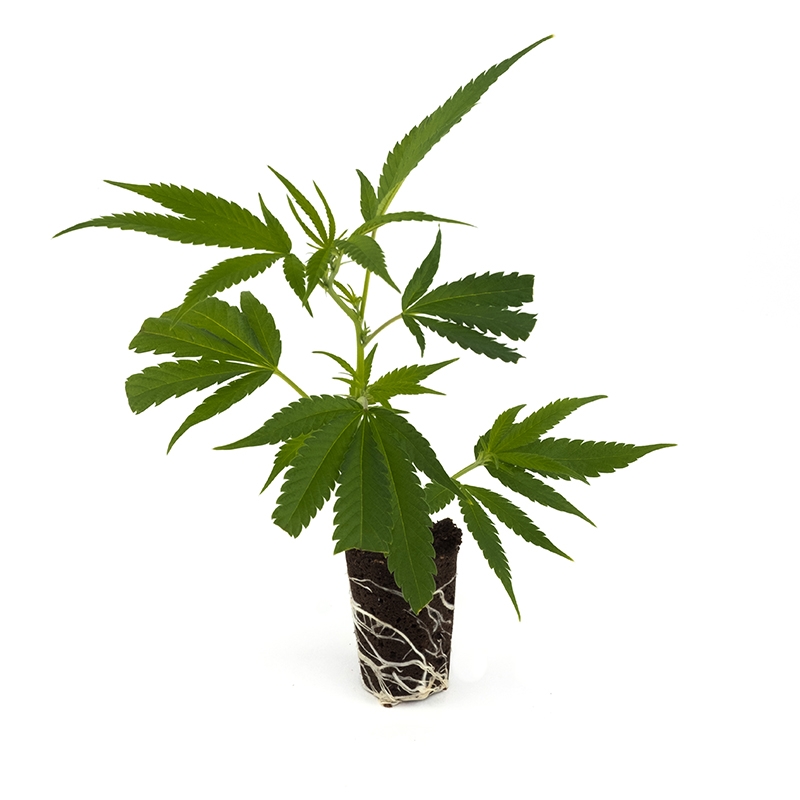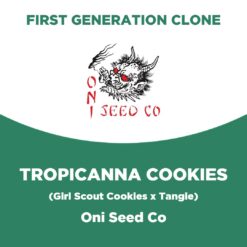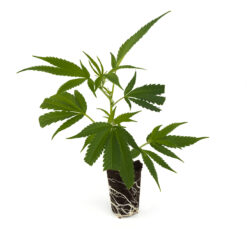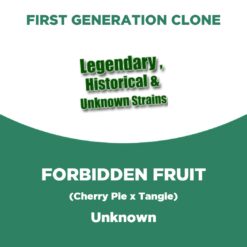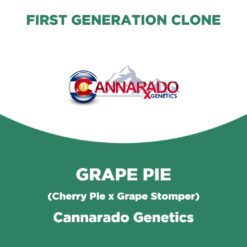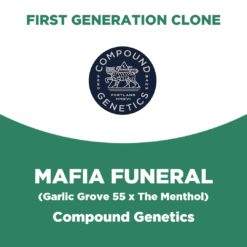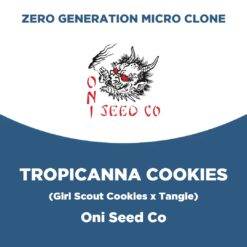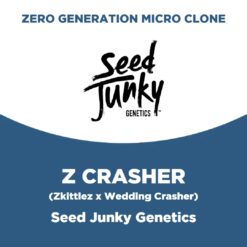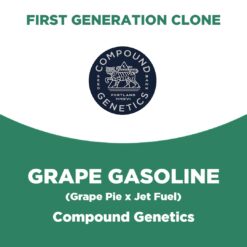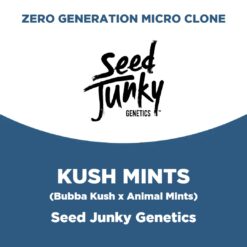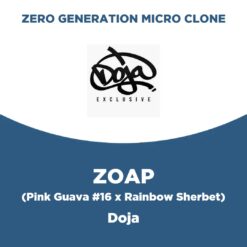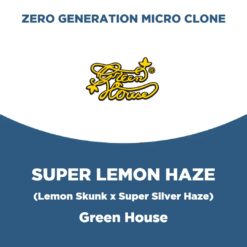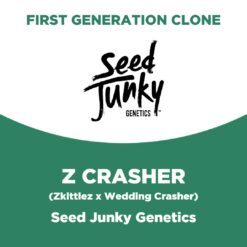Tropicanna Cookies | Oni Seed Co | First Generation Clone
From €20,00 iva inclusa
Tropicanna Cookies | Oni Seed Co | First Generation Clone
Tropicanna Cookies (also called MTN Trop) was skillfully crafted by the long-time cannabis breeder Harry Palms. The offspring of Girl Scout Cookies (GSC) and Tangie, Tropicanna Cookies, helped establish Harry’s seed bank, Bloom Seed Co, as a leading force in the industry. The strain has since won the IC 420 Grower’s Cup (2019), becoming a fan-favorite for its energetic and uplifting high.
Interestingly, though, the flavor and potency of the original Tropicana have since been refined by Colorado-based Oni Seed Co., giving rise to a second-generation version—Tropicanna Cookies F2. Oni was also founded by Harry Palms, alongside Oni Noodles, as they set out to develop the industry’s most flavorsome strains.
Whether it’s the first or second-generation Tropicanna Cookies, both are renowned for an energetic, uplifting high that exudes hints of citrus and tropical fruits. And, with THC levels of 20% or more, it’s clear to see that Harry Palms has done a skilful job of harnessing the most desirable attributes from GSC and Tangie.
Characteristic:
- Indica / Sativa: 20%-80%
- Days: 55/63
- Cross: Girl Scout Cookies x Tangie
Attention: the availability of our clones is subject to variations during the year, to be guided in your purchase write to us at info@greencountry.biz before confirming the order, we will send you the updated list with the available genetics. Thank you!
Tropicanna Cookies | Oni Seed Co | First Generation Clone
Thanks to genetics from Girl Scout Cookies and Tangie, Tropicanna Cookies delivers sought-after effects, flavors and growing traits that have helped establish its place in the cannabis industry. To better understand the taste, potency, and head-focused high, let’s take a closer look at Tropicanna’s parents.
Girl Scout Cookies, often referred to as GSC, is a hybrid cannabis strain renowned for its unique flavor profile and balanced effects. It is the result of crossing the sativa-dominant Durban Poison and the indica strain OG Kush, resulting in a hybrid with both cerebral and physical effects. GSC is characterized by its sweet and earthy aroma with hints of mint, spiciness, and dense, colorful buds.
A predominantly sativa-dominant hybrid, Tangie is the progeny of California Orange and a Skunk-1 hybrid. Tangie’s most prominent feature is its zesty tangerine-like scent, which carries over into its taste. This strain typically produces an uplifting and energizing effect, making it a favorite among those seeking a mood boost and increased focus. With its bright and tart characteristics, Tangie stands out as a refreshing choice among cannabis enthusiasts.
Both GSC and Tangie have been used to inspire countless modern cannabis strains. Still, it’s only by expertly crossing two that Harry Palms was able to create the acclaimed Tropicanna Cookies.
Despite leaning into its sativa heritage and growing tall, Tropicana Cookies develops broad leaves and dense, indica-like buds. As such, this cultivar requires regular pruning to keep the canopy under control, or growers risk mold and poor airflow spoiling their harvest. Once fully matured, a single plant easily fills the grow room with the smell of fresh citrus fruits, pine trees, and a hint of sour spices.
Focusing on the flowers, this strain typically produces dense and resinous buds that feature a range of colors, including deep greens and shades of purple, often intertwined with vibrant orange pistils. These visually appealing buds are complemented by a generous coating of trichomes, lending them a frosty and glistening appearance.
One of Tropicana’s leading effects is its energetic and uplifting high. According to users, this strain elevates you off the couch, rather than causing you to sink endlessly into it. As such, this isn’t a strain recommended for relaxing after a long day at work. Instead, Tropicana Cookies is best used for creative pursuits, outdoor activities, or when you need a significant mental boost.
The strain’s euphoric prowess has also made it popular among medicinal users seeking support with various mood-related disorders. This is in part due to Tropicana Cookies’ potency, as THC levels range from 21–28%. Because of this, a slow and steady approach is recommended for first-time users, as the intense euphoria can quickly overwhelm.
The head-focused high of Tropicana Cookies means it’s best enjoyed during the day. However, the strain is also highly regarded for its diverse flavor profile. Teeming with citrus fruit flavors, the inhale is particularly sweet, while the exhale possesses hints of earth and spice.
For those focusing on the strain’s medicinal properties, a vaporizer allows precise control over both the flavor and the ratio of activated compounds. To capitalize on Tropicana’s most abundant terpenes—caryophyllene, limonene, and humulene—consider vaping in the 150–180°C range. Aside from vaping, Tropicana Cookies is also a fantastic choice for freshly rolled blunts. Thanks to the strain’s uplifting nature, it pairs well with long walks in the park. Experiencing a packed joint while surrounded by nature is something all cannabis enthusiasts should try at least once.
Tropicanna Cookies is also known for its respectable resin production, making it a strong candidate for concentrates such as rosin hash or RSO. And, with a high-quality grinder, it’s possible to collect the kief and use it to add another level to joints, bowls, and blunts.
Tropicana Cookies is a sought-after cannabis strain celebrated for its exceptional flavor, well-balanced effects, and eye-catching physical characteristics. And, thanks to the relentless work of Harry Palms, the strain combines the sweet and earthy notes of Girl Scout Cookies with the zesty citrus of Tangie to offer a unique and enjoyable sensory experience.
What To Do When You Receive Your Clones of Tropicanna Cookies?
1. TRANSPLANT
We highly recommend transplanting into the soil or medium that suits your system as soon as you receive your clones. If necessary, they can remain in their “Blisters” for a day or two without allowing the Rockwool/RootRiot to dry out.
We recommend transplanting clones into a 1.5-2 liter pot so that they can form a solid root and sturdier plant structure before being placed in their final pot. Immediately transplanting them into a pot that is too large can cause root rot to develop and slow or hinder the growth of your plant. This will help harden them off and establish themselves before they are transplanted into their final pot.
2. ACCLIMATATION
Acclimating clones to their new environmental conditions is essential to growing a healthy plant and having a successful cycle. While at the nursery, the clones are kept under a 24-hour light cycle. We recommend keeping them on at least an 18/6 light cycle (18 hours light and 6 hours dark) after receiving them. While in the cloning facility, they are kept at 21-24 degrees Celsius and a relative humidity of 69-75%. A slight decrease in temperature and humidity can be accomplished within a week to allow your clones to adapt to your grow room environment.
Acclimating clones to non-direct light is essential to avoid stress. Full intensity of sun or lamps can damage a younger clone/plant, so you will need to decrease the light intensity. The best way to do this is to use a greenhouse, physically move them in and out of the structure, or place shade netting (30-40%) over them for this adjustment period. The acclimation phase should only take a week or two and should be enough time to remove the shade or be moved out of a greenhouse to full light exposure. Maintaining a constant flow of air on your plants will help harden them to the natural conditions found outside and will help make the stems much stronger overall.
3. IRRIGATION AND NUTRITION
Overwatering clones is a very common mistake. It is essential to give your clones a healthy amount of water, but do not oversaturate them by submerging them. A dry-down period is necessary for clones. To determine the moisture content of the soil when the pot is light, squeeze a small handful of medium and observe if water drips. If no water is coming out, it’s a great time to give them a healthy watering without over saturation. This watering method allows the roots to search the pot for water/nutrients creating a sturdy root ball.
If you have some clones that are still showing stress after transplanting up to three days later, you can give them some water again, but you’ll want to make sure the Rockwool/RootRiot itself is moist. Sometimes, even if the soil is moist, the cube will dry out and water must be applied exclusively to the cube. You need to find a good balance between letting the clones dry out without allowing the foliage to show signs of stress. This can cause health problems for your clones.
Clones can be fed every other day a vegetative feed between 1100-1400 PPM depending on how quickly they are assimilating nutrients (NOTE: each strain is different). How often you need to feed them will depend on the type of growth you have (i.e., inorganic, organic, synthetic, hydro, soil, etc.).
FAQ
WHICH GENETICS ARE AVAILABLE?
Genetics marked as “available” are ready to ship on schedule. Genetics listed “not available” can be pre-ordered by sending us a request to info@greencountry.biz and will generally be available in 15/21 days.
WHAT ARE THE SHIPPING AND DELIVERY TIMES?
If the genetics are marked as “available” shipping times can vary from 2 to 5 working days (to ensure that your clones do not remain stuck in courier warehouses, shipments are made by Wednesday of each week).
HOW ARE CLONES SHIPPED?
We ship our clones in special blisters for transporting the plants.
ARE CLONES FEMINIZED?
Yes, all our clones are taken from female mother plants.
HOW BIG ARE THE PLANTS I WILL RECEIVE?
Our clones have a height that varies from 13cm to 25cm.
HOW DO I KNOW THE CLONES ARE PARASITE-FREE?
Our plants are prepared and grown with strictly controlled practices both in the greenhouse and in the laboratory in environments free of plant parasites. We only use chromotropic traps and predatory insects to defend the cultivation spaces.
WHAT IS THE “RECIPE” THAT MAKES THE CLONES HIGHER LEVEL?
Mother plants are constantly regenerated through tissue culture so you always have fresh clones at peak vigor. Once the clones have been taken from the mother plants, they are left to root in a peat/coconut mixture, supplemented with a mixture containing natural plant hormones, basic micro/macronutrients and vitamins.
DOES TISSUE CULTURE ELIMINATE “GENETIC DRIFT”?
Genetic drift, also known as clonal degradation, is a phenomenon typically caused by a variety of factors that can include poor cultivation practices, stress due to abiotic factors (light, heat, fertigation), or biotic factors such as parasites and microbes. Since tissue culture restores the youthful state of the old, tired mother plant and completely removes parasites and pathogens, clonal degradation becomes highly unlikely.
Prodotti correlati
First Generation Clones
Talee / Cloni
First Generation Clones
East Coast Sour Diesel | Dr. Greenthumb | First Generation Clone
Talee / Cloni
First Generation Clones
First Generation Clones
First Generation Clones
First Generation Clones
First Generation Clones
Talee / Cloni
First Generation Clones
Apples and Bananas | Compound Genetics | First Generation Clone
First Generation Clones
First Generation Clones
First Generation Clones
Talee / Cloni
First Generation Clones

